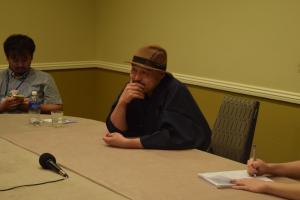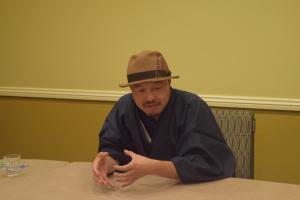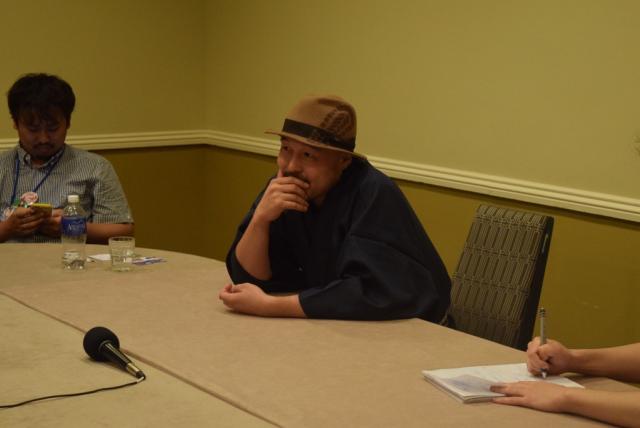Yesterday afternoon, we were privileged to have the chance to conduct a fifteen-minute interview with Seiji Kishi, the directorial mind behind some of anime’s biggest international hits such as Persona 4: The (and The Golden) Animation, Angel Beats!, Danganronpa, Game of Laplace and Assassination Classroom. To honor the request of Mr. Kishi and his crew, we have elected to transcribe the audio from the interview below.
Key:
CB – Clinton Bowman
SK – Seiji Kishi

Seiji Kishi (via translator:) As for a comment about that, it’s going to be bit difficult, but as I said up there when I received the award, I believe that it is thanks to our staff… that allows me to do things like that and it’s a great honor to be with the staff I’m with and I plan to make many more… many more things that are up to quality with the same staff.
CB: You are noted to have worked on some of the biggest anime releases, both domestic to Japan and internationally, such as Persona 4 The Animation, Angel Beats!, Danganronpa and Game of Laplace, just to name a few. Out of all of your directorial works, which would you consider to be the most favorite to have worked on?
SK: [laughs] My answer as an adult… my answer formally would be… I love them all! [laughs] I don’t play favorites.
CB: [laughs] I understand, I understand! Speaking of Danganronpa and Game of Laplace, they’re both centered around solving mysteries. Are there any elements that you have taken from directing Danganronpa into Game of Laplace?
SK: Yes, actually, there are some things that I take over from Danganronpa into Game of Laplace and that is mainly how to use the time effectively. As you know, Japanese animations are 20 minutes and we have 20 minutes of time to effectively show character and effectively show things like mysteries, too, so that time management is something that Game of Laplace will take after greatly from Danganronpa.
CB: You’ve also directed one of my personal favorite series, Angel Beats!. One of our Anime Editors, Joshua Piedra would like to know how did it feel making grown men cry at the end of Angel Beats?
SK: [laughs] Regarding Angel Beats!, the first question of how I felt about making grown men cry at the end is that I personally am not an artist, I am not really the artist type, but as an entertainer, I felt very honored that people would even go to the extent of crying to enjoy what I have done.
CB: So how did the ending formulate in your head? What was the process?
SK: The ending was talked about with [Jun] Maeda, the author of the original works, when we actually began this project, but then it was, even though we planned it 
CB: One final question, speaking of source material, how important is it for you as a director to either stay faithful to the source material or deviate from it?
SK: That’s another extremely difficult question you asked there [laughs]. Firstly, I, as a director, am not really in charge of how an original work is selected. It’s actually more by the producers who make the requests… but then again, the choices that these producers make, I do get to choose from those choices that they have provided, so, I myself, as a director have the choice of holding back or taking the request, and that’s the pool of choices the original works come from.
So… let’s say I take a request. The question would then be will I follow that original story-line as it stays or will I deviate from it. How I decide is simply asking, “Is the original story there… in terms of saying there… have strong product value. If [the product value] is strong, we say let’s go and follow [the story] step-by-step, let’s not lose any of the value that it has, and we try to respect the value that the original story has.
And then there is the case of when we don’t do that and we choose to deviate, put in some animation original aspects. This often happens when the original story isn’t finished yet. Maybe it’s an ongoing series or has open-ends or whatnot. In this case, we do try to put some customization in it, or make some arrangements, so that it would, as a product, would be finished in itself.
CB: So, thank you very much, and thank you for having us.
SK: No, thank you!


